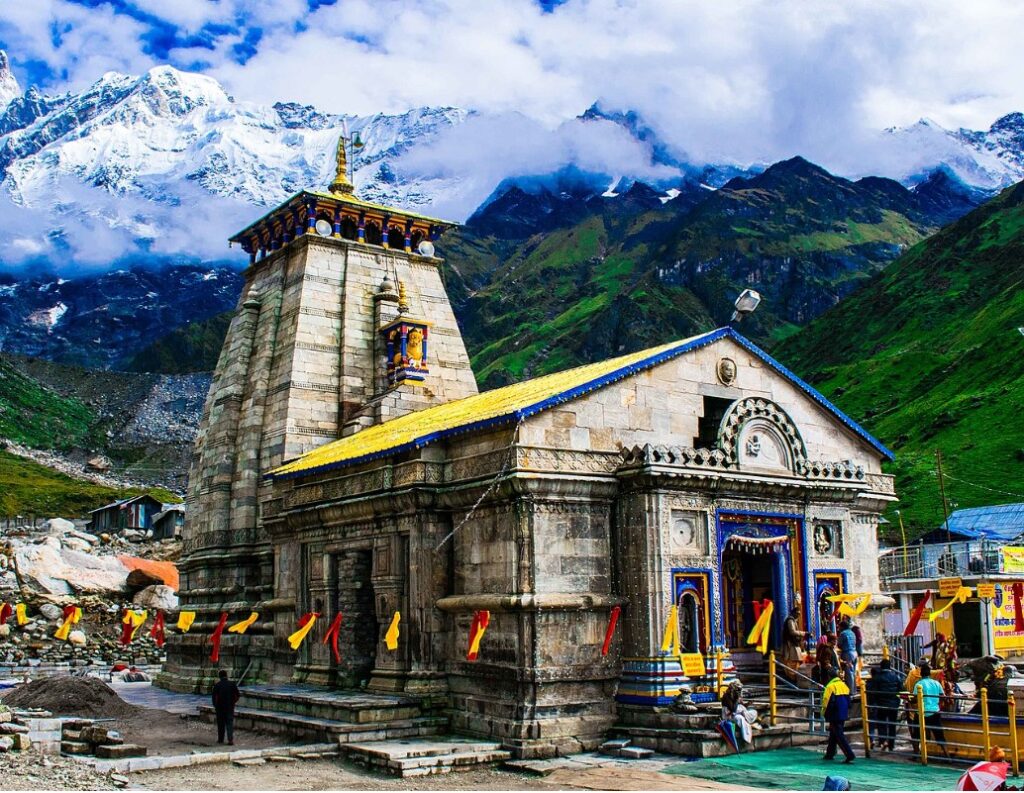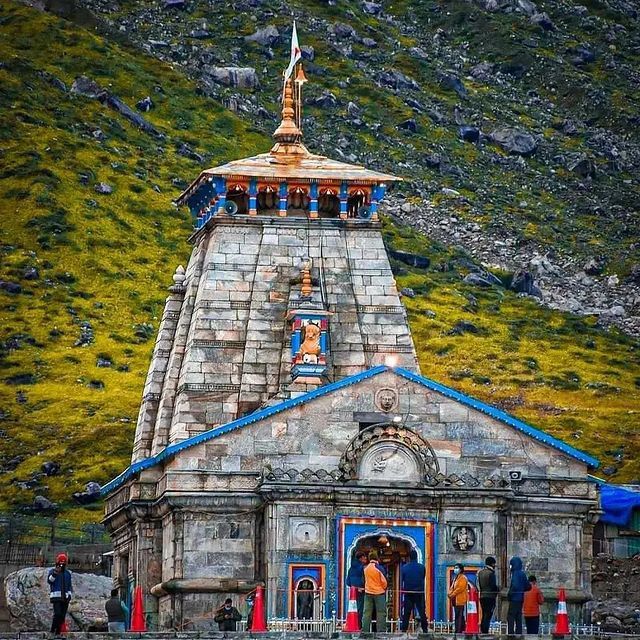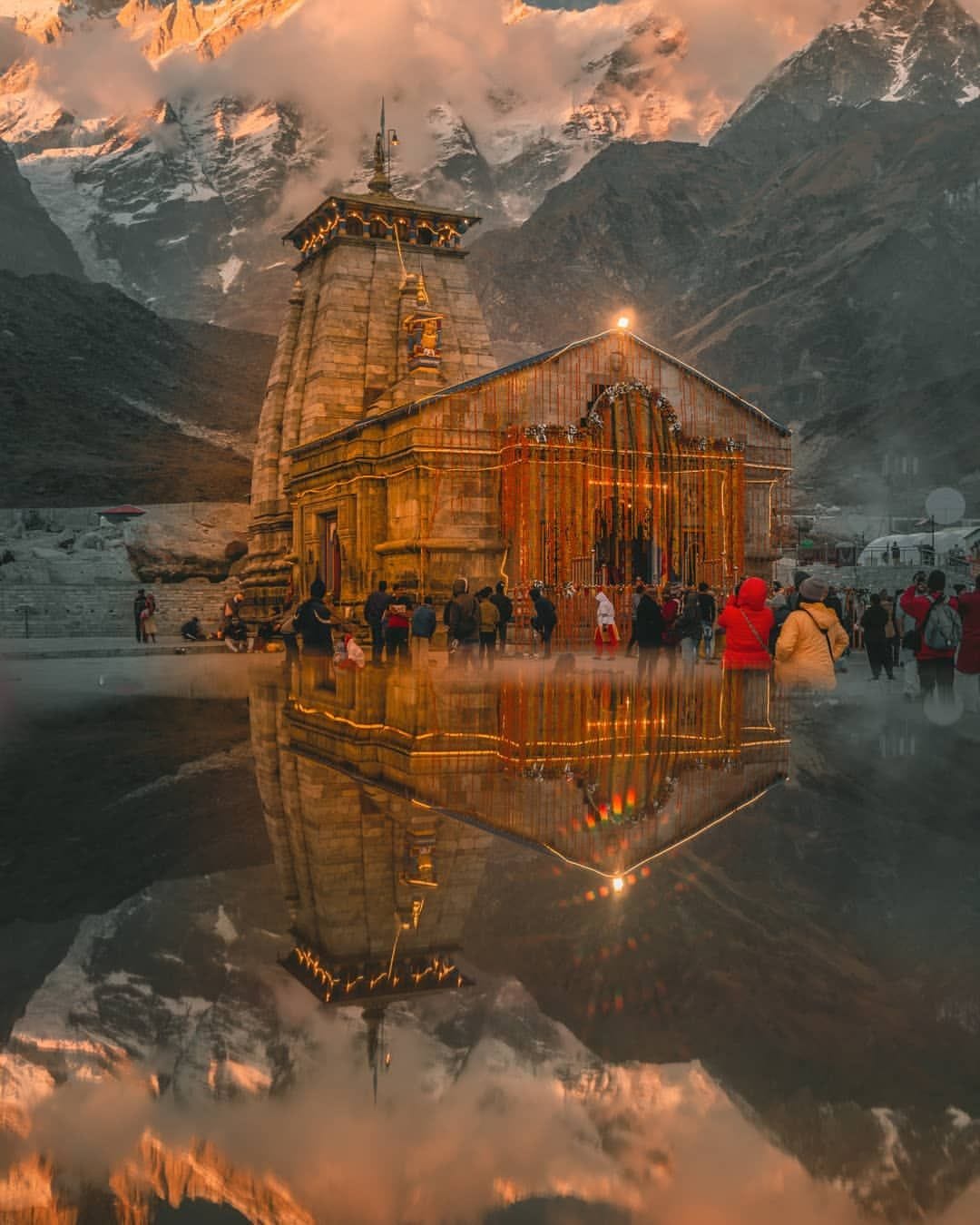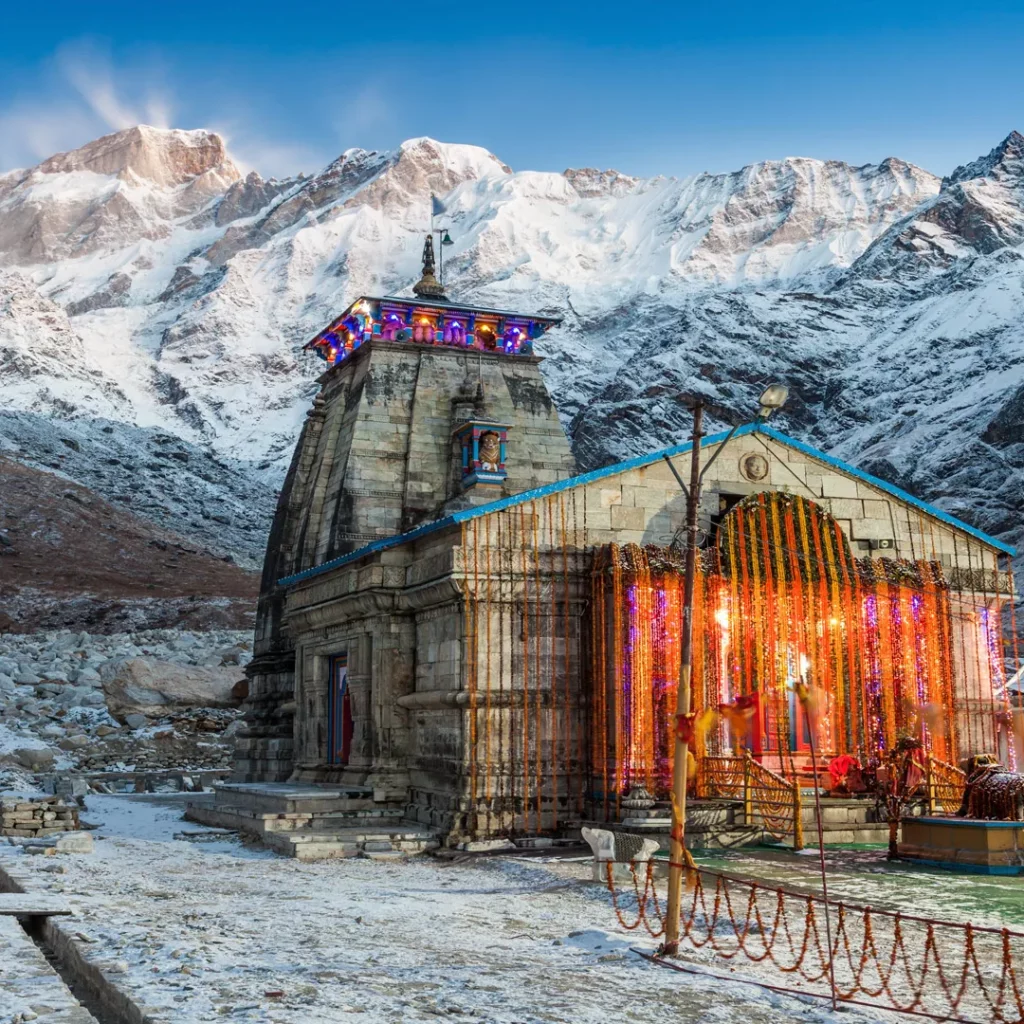
Kedarnath Temple
Nestled in the picturesque Garhwal Himalayas of Uttarakhand, Kedarnath Temple is a sacred Hindu pilgrimage site dedicated to Lord Shiva. Situated at an elevation of 3,583 meters (11,755 feet) above sea level, the temple holds immense significance as one of the twelve Jyotirlingas and is part of the Char Dham Yatra. The temple is surrounded by snow-capped peaks, offering a breathtaking backdrop to its spiritual ambiance. Pilgrims embark on a challenging journey to seek the blessings of Lord Shiva, who is enshrined in the form of a lingam, representing the cosmic power. Kedarnath Temple’s remote location and the spiritual aura of the Himalayas make it a revered destination for devotees, trekkers, and those seeking a transcendent connection with the divine.
Namaste 🙏 नमस्ते
Secure your visit • अपनी यात्रा सुरक्षित करें
Historical background and Architectural splendor
Kedarnath Temple’s history is deeply rooted in ancient Hindu mythology. Legend has it that after the battle of Kurukshetra, Pandavas sought Lord Shiva to seek redemption for their sins. Shiva, unwilling to forgive them immediately, transformed into a bull and dived into the ground, leaving behind his hump on the surface. The hump is believed to be present at Kedarnath, and the temple was later constructed over this sacred spot. Adi Shankaracharya, the revered Hindu philosopher, is credited with reviving and renovating the temple in the 8th century.
The architecture of Kedarnath Temple reflects the traditional Himalayan style. Built with large, rough stones, the temple stands as a sturdy structure against the harsh mountain environment. The main sanctum, or Garbhagriha, houses the lingam, and the exterior is adorned with intricate carvings and sculptures. The temple’s conical-shaped shikhara stands tall amidst the snow-covered peaks, creating a mesmerizing sight.

Religious Significance
This temple holds immense religious significance in Hinduism. Dedicated to Lord Shiva, Kedarnath is one of the twelve Jyotirlingas, which are considered the most sacred abodes of Lord Shiva. According to Hindu mythology, after the great Kurukshetra War, the Pandavas sought the blessings of Lord Shiva to atone for their sins committed during the war. Lord Shiva, wanting to evade them, took the form of a bull and hid in the ground at Kedarnath. When the Pandavas discovered him, Shiva dived into the ground, leaving behind a hump. The Pandavas constructed the temple over this hump, and it is believed that visiting Kedarnath and seeking the blessings of Lord Shiva here can absolve one's sins and grant spiritual liberation.
The religious significance of Kedarnath is further amplified by its challenging location at an altitude of around 3,583 meters (11,755 feet). The temple is part of the Char Dham Yatra, a pilgrimage circuit that includes Badrinath, Yamunotri, and Gangotri. Pilgrims believe that undertaking this arduous journey to Kedarnath not only cleanses them of sins but also earns them the grace of Lord Shiva. The temple, surrounded by snow-capped peaks and pristine natural beauty, provides a serene and spiritually charged atmosphere for devotees who seek solace and divine blessings in the sacred abode of Kedarnath.


Festival and Celebrations
Here the festivals celebrated are Mahashivaratri, Opening and Closing Ceremonies (Kedarnath Mahotsav and Bada Dwadashi), Akshaya Tritiya, Kedarnath Yatra, Rudra Abhishek.
Surroundings area & attractions
- Bhairavnath Temple: Dedicated to Bhairav, an incarnation of Lord Shiva, this temple is a significant pilgrimage spot near Kedarnath.
- Sonprayag: Picturesque confluence of holy rivers Basuki and Mandakini, serving as the starting point for the Kedarnath Yatra.
- Triyuginarayan Temple: Believed to be the sacred spot of Lord Shiva and Goddess Parvati's marriage, marked by an eternal flame.
- Shankaracharya Samadhi: The final resting place of Adi Shankaracharya, the philosopher who renovated the temple, is revered by pilgrims.
- Gaurikund: Base camp for the Kedarnath Yatra, known for the Gauri Kund hot water spring where devotees take a holy dip.
Notable Events and Incidents
- Natural Disasters: The region faced severe floods and landslides during the catastrophic flash floods of June 2013, resulting in significant damage to infrastructure and loss of lives. The temple, miraculously, remained standing amidst the destruction, adding to its religious significance.
- Reconstruction Efforts: Following the 2013 floods, extensive reconstruction efforts were undertaken to restore the damaged infrastructure, including the Kedarnath Temple.
Connectivity :
- By Air-The nearest airport to Kedarnath is Jolly Grant Airport in Dehradun, approximately 238 kilometers away. From the airport, one can hire taxis or use public transport to reach the base points for the Kedarnath Yatra.
- By Rail: The nearest railway station is Rishikesh, around 215 kilometers from Kedarnath. From Rishikesh, one can hire taxis or use buses to reach Gaurikund, the starting point for the trek to Kedarnath.
- By Road: Kedarnath is not directly accessible by road. Pilgrims need to reach Gaurikund, which is well-connected by road to major cities in Uttarakhand. From Gaurikund, one can undertake a trek or use ponies and palanquins to reach Kedarnath.
FAQs
The Kedarnath Temple is a Hindu temple dedicated to Lord Shiva, located in the Himalayan range near the Mandakini River in Uttarakhand, India. It is one of the twelve Jyotirlingas, which are considered the holiest abodes of Lord Shiva.
The Kedarnath Temple is situated at an altitude of 3,583 meters (11,755 feet) above sea level, amidst the stunning backdrop of the Garhwal Himalayas in Uttarakhand.
The Kedarnath Temple holds immense religious significance for Hindus. It is believed to be one of the Panch Kedar temples, where devotees worship Lord Shiva in his form as the “Lord of the Kedar Khand.” It is also a part of the Char Dham Yatra, a pilgrimage circuit considered sacred by Hindus.
The exact date of the temple’s construction is not known, but it is believed to have been built by Adi Shankaracharya in the 8th century CE. The temple has undergone renovations and reconstructions over the centuries.
According to Hindu mythology, the Kedarnath Temple is associated with the Pandavas, the central characters of the epic Mahabharata. It is believed that after the Kurukshetra War, the Pandavas sought the blessings of Lord Shiva to atone for their sins. Lord Shiva eluded them and took refuge at Kedarnath in the form of a bull.
No, due to heavy snowfall in the region during winter, the Kedarnath Temple remains closed to devotees from November to April each year. It reopens in April or May, depending on weather conditions.
The Kedarnath Temple can be reached via various trekking routes or by helicopter from nearby towns like Guptkashi, Phata, and Sitapur. The trek from Gaurikund is the most popular route, which involves a trek of around 16 kilometers (10 miles).
The Kedarnath Temple provides basic facilities for pilgrims, including accommodation, food, and medical services, especially during the pilgrimage season. Additionally, there are numerous guesthouses, dharamshalas, and eateries in nearby towns to cater to the needs of pilgrims.
Yes, the Kedarnath Temple follows a strict schedule of daily rituals and ceremonies, including puja (worship), aarti (ritual of light), and abhishekam (ritual bathing of the deity). Special festivals like Maha Shivaratri are celebrated with great fervor at the temple.
Yes, the Kedarnath Temple is open to people of all faiths and backgrounds. However, visitors are expected to respect the religious sentiments and traditions of the temple while visiting.
The exact age of the Kedarnath Temple is uncertain, but it is believed to have been constructed around the 8th century CE by Adi Shankaracharya, a revered Hindu philosopher and saint.
Pilgrims trekking to the Kedarnath Temple should be adequately prepared for the journey, as it involves navigating mountainous terrain and varying weather conditions. It is advisable to carry essential items such as warm clothing, water, snacks, and necessary medications. Hiring a local guide can also be helpful for navigation and safety.
Visitor information
Entry Fee: No fee
Kedarnath Temple generally does not have a specified entry fee. Devotees can visit the temple premises without a mandatory entrance fee.
-
The opening and closing dates of the Kedarnath Temple are decided by the priests based on the auspicious dates in the Hindu calendar. The dates are generally announced on Mahashivratri, in February. Generally, the temple opens in the last week of April or the first week of May and closes in the second week of November.
This year, Kedarnath Dham will open on 11 May at 6:20 AM. The closing date is not announced yet; in general, it is announced on the day of Bhai Dooj.
🕉️ Daily Temple Schedule
Approximate Timings
Morning Aarti and Mahabhishek Puja begins
Temple opens for Morning General Darshan
Morning Darshan ends
Temple closes for Bhog and Rest
Temple reopens for Evening Darshan
Evening Aarti
Evening Darshan continues
Temple closes for the night
Address:
